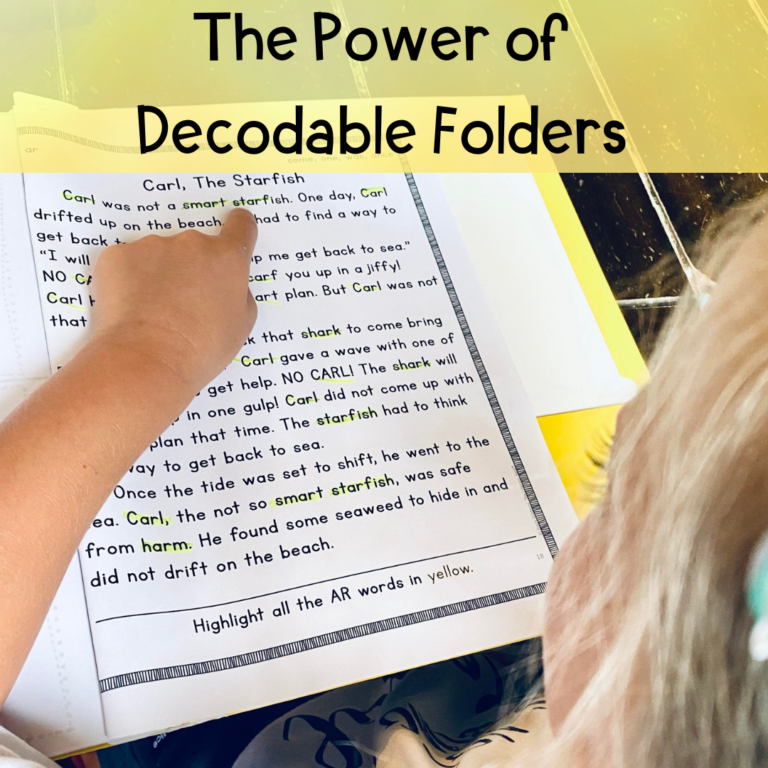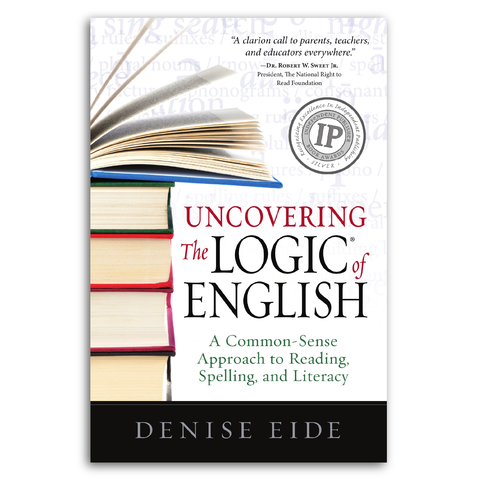
Share This:
I tend to talk too much, so let me get straight to the point. Every month or so, I’m going to do a book review for a book that I’ve found helpful on my journey towards the Science of Reading. I’ll keep it short, with minimal verbal floof on my part!
How many times have you heard the words, “English doesn’t make sense?” We’ve all seen the Facebook memes and laughed at the absurdity of English. In reality, however, 50% of English can be decoded through sound-symbol correspondence alone. By adding in simple rules, up to 97% of English is decodable. When we argue against teaching children the rules for English because there’s too many exceptions, we are arguing that 3% worth of exceptions merits an entire system defunct. In Uncovering the Logic of English, Denise Eide does as promised—she teaches us 30 basic phonics rules that can help us understand how English really is a logical language.

I think this book is perfect for anyone who is already invested in the Science of Reading and is trying to dig deeper. If you were a product of the whole language (or balanced literacy) movement and were never taught the rules of English, this will help you understand our language better, so that you can then help your children.
I wouldn’t purchase this as my first book going into the Science of Reading. As I try to think about where this would fit on someone’s journey, I feel like you would need to already have a basic understanding of the Science of Reading, why it is important, and be committed to explicitly and systematically teaching phonics.
This is not a systematic phonics approach, and therefore it is not a curriculum. Denise Edie does lay out 30 basic rules for teaching English, but they aren’t laid out in an order that I would teach children. For example, rule 30 discusses the floss rule (where you double f, l, s after a single vowel), while rule 1 is the Gentle Cindy rule. Understanding these rules can help enhance your instruction with a phonics scope and sequence, but this is not a sequence to follow on your own. Please note, she does not intend this to be a scope and sequence, so this is not a criticism of the book. It is just a precaution I’m putting out there so teachers do not mistake it for one.
Denise Eide teaches you all the things you should’ve learned as a child with phonics. You will sit with this book on your lap and find yourself screaming “WHY DID NOBODY TEACH ME THIS??” Despite the weighty topic, Eide writes like she’s talking to a friend. I never found myself overwhelmed with her explanations. Instead, I found myself curling up with this book like I would my favorite YA series.
I will share one of her rules here, just to illustrate her brilliance.
Rule 3: Words in English do not end in i, u, j, or v. This one rule is always on the board in my classroom. There are so many different words whose spelling is explained by this rule. Why do we have an e on the end of starve? Because words in English don’t end in v! Why is there an e at the end of blue? Because words in English don’t end in u! When you begin to understand this rule, many “nonsense” spellings in English make perfect sense.
The only thing I didn’t care for in the book was the few instances where Eide refers to different learning styles. The idea of a kinesthetic, auditory, and visual learner is actually one of the biggest myths perpetuated in the education field. There’s simply no scientific evidence that shows students learn best with one of those methods. Instead, we know children learn best through a multi-sensory approach to instruction. It was not a large portion of the book, just a couple sentences, but I wanted to be honest in my review.
I know most of the world wants physical copies of their books. I’m finding, especially with the educational books I’m reading, I prefer eBooks. I love that I can highlight all I want. Then, if I am trying to find a particular quote or rule, I can actually search for it right there on the screen. It has saved me so much time when preparing presentations and looking for quotes! No matter whether you grab this book as a physical copy or an eBook, I think this book should find its way to the shelf of every person who is invested in the Science of Reading.
Share This:

Savannah Campbell is a K-5 reading specialist. She has taught her entire 12-year teaching career at the school she went to as a child. She holds two master’s degrees in education from the College of William and Mary. Savannah is both Orton-Gillingham and LETRS trained. Her greatest hope in life is to allow all children to live the life they want by helping them to become literate individuals.

Savannah Campbell is a K-5 reading specialist. She has taught her entire 12-year teaching career at the school she went to as a child. She holds two master’s degrees in education from the College of William and Mary. Savannah is both Orton-Gillingham and LETRS trained. Her greatest hope in life is to allow all children to live the life they want by helping them to become literate individuals.
Feeling overwhelmed with all the terminology out there? Want to know the key terms all teachers need to teach phonics? In this FREE Rules of English cheat sheet, you get a 5 page pdf that takes you through the most important terms for understanding English—you’ll learn about digraphs, blends, syllable types, syllable divisions, and move. Grab today and take the stress out of your phonics prep!
